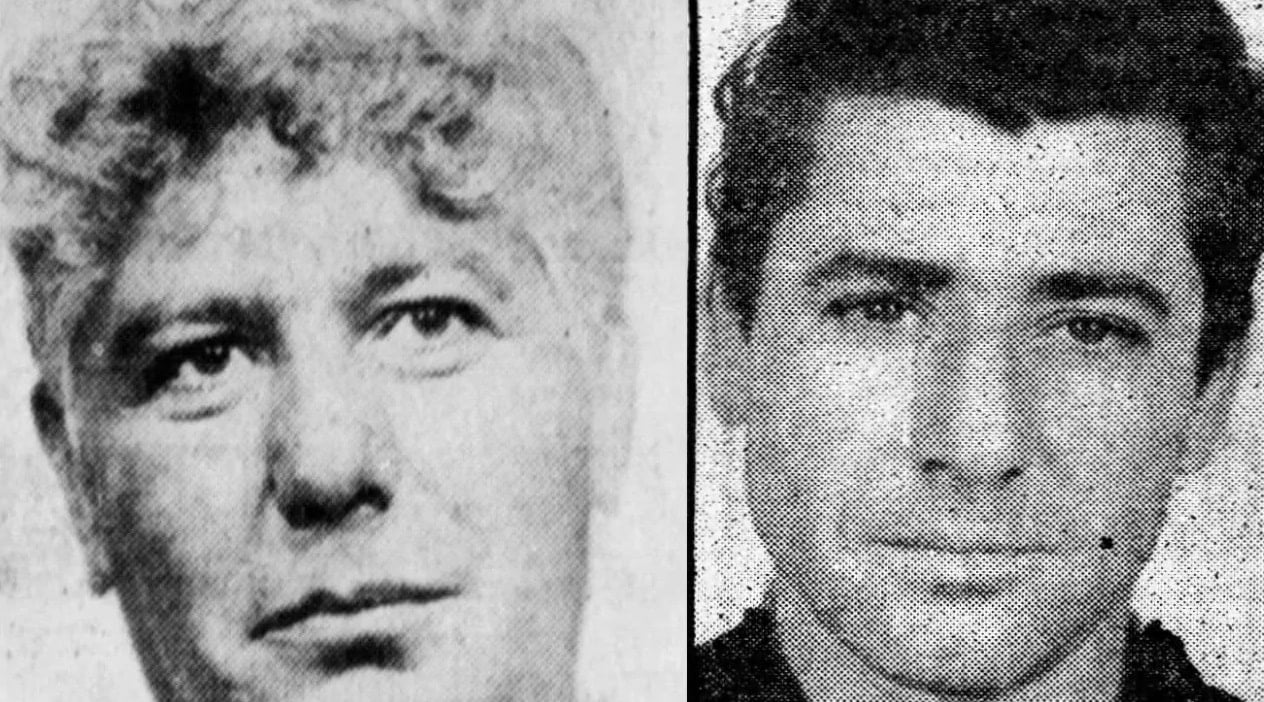

The emergence of the Greek mafia in Philadelphia traces back to the mid-20th century, as waves of Greek immigrants settled in the city, particularly in South Philadelphia.
While most assimilated into working-class neighborhoods, a small subset gravitated toward organized crime, carving out their own niche in the city’s mafia.
Unlike more structured crime syndicates like the Italian-American Mafia, the Greek mob operated as a loose confederation of racketeers, loan sharks, and drug traffickers. Their criminal enterprises often intersected with those of the Philadelphia crime family, creating a mutually beneficial — though occasionally tense — alliance.
By the 1970s, figures like Steve Bouras had risen to prominence, expanding Greek control over methamphetamine distribution, illegal gambling, and extortion operations. Bouras in particular was seen as a savvy and well-connected operator, reportedly serving as a key liaison between the Greek mob and the Italian Mafia under Angelo Bruno’s leadership.
During Bruno’s reign, which emphasized diplomacy over violence, the Greeks flourished under his protection. However, as power shifted in the early 1980s with the brutal rise of Nicky Scarfo, the Greek mob’s relative independence and influence began to wane — culminating in the violent deaths of key figures like Bouras and Harry Peetros.

In a 1980 report by the Pennsylvania Crime Commission, Bouras was described as a liaison agent between “the so-called Greek mob” and the larger crime organization headed by Bruno and Martorano.
However, this arrangement came to an abrupt end when the exiled mobster, Nicky Scarfo, masterminded the assassination of Bruno on March 21, 1980.
Bruno’s murder sparked one of the bloodiest mob wars in history. His loyalists fought fiercely to maintain control, while the “new order” sought to claim dominance. Ultimately, the new order prevailed, with Nicky Scarfo emerging as the de facto boss.
Amidst this chaotic power struggle, two Greek mob figures, Steve Bouras and Harry Peetros, were also deeply involved. The Greeks had long controlled a significant portion of the drug trade and had enjoyed protection under Bruno’s rule.
Peetros, a powerful loan shark, and Bouras both operated under the umbrella of the Italian mafia during Bruno’s reign. However, after Scarfo’s rise to power, their days of unchallenged freedom quickly came to an end.
In May 1981, Bouras was killed, along with his girlfriend Jeanette Curro, 54, by two masked gunmen in the South Philadelphia Greek restaurant “Meletis”. His companions at the dinner table included Raymond Martorano, a business associate of Scarfo.
In the following video, the owner of the Greek restaurant describes the scene:
It was reported that Scarfo ordered the hit, as Bouras had refused to pay Scarfo’s street taxes, specifically for his meth ring. There have also been speculations that Martorano arranged the hit for Scarfo because of eyewitness claims that the gunman motioned for Martorano to move out of the way before opening fire.
Following the twin murders, the Philadelphia police arrested a suspect named Neil Ferber who was convicted on May 3, 1982, and sentenced to death in the electric chair.
However, Ferber was exonerated after spending four years in prison. Upon retirement, Philadelphia District Attorney Edward G. Rendell admitted to withholding exculpatory evidence from Ferber’s trial and requested that a county judge retry his case. Ferber was acquitted, released and awarded $1.9 million in a civil suit against the City of Philadelphia for his wrongful conviction.
To this day, no one else was ever charged for the Bouras-Curro murder, but police theorize that the killing was ordered by Scarfo.
As the New York Times (NYT) reported at the time, Philadelphia detectives expressed strong suspicions that it was related to the killing of Harry Peetros, whose body was found a little earlier in the trunk of his gold Cadillac, parked on a quiet street a mile west of the city limits.

The crime commission, according to the NYT report, said that Peetros and his brother, James Peetros, were “elder statesmen” of the “Greek mob.”
Investigators said the two killings were apparently connected to a struggle within the “Greek mob” over a lucrative new sideline, distributing cocaine in downtown Philadelphia and its Delaware County suburbs.
Although rather prominent in the 1970s and 1980s, the Greek mafia has cooled down and remains dormant. However, there have been some occurrences of members being found loan sharking in Philadelphia in modern times. The reason for this dormant period could be traced back to the leaders’ loss in the 1980s mob war in Philadelphia.

When a federal judge in Philadelphia sentenced him to 55 years in prison on murder and racketeering charges in May 1989, Scarfo just shrugged. Scarfo and his ensuing war with rivals would result in more than 20 deaths in the early ’80s.
Just two weeks earlier, Scarfo had been sentenced with seven others to life in prison for the 1985 slaying of bookmaker Frank “Frankie Flowers” D’Alfonso.
In addition, he was serving a 14-year sentence he got in 1988 for extorting a developer to pay a $1 million bribe to a Philadelphia city councilman, who was to give a share of it to Scarfo.
Scarfo’s life sentence in prison ended in January 13, 2017, when he died, reportedly of cancer, at the Federal Medical Center in North Carolina. He was 87.
During the trial, Scarfo’s son Mark Scarfo attempted suicide on November 1, 1988. Mark, then only 17 years old, had been taunted for years by classmates about his father’s criminal activities. Increasingly despondent over his father’s possible imprisonment, Mark Scarfo hanged himself in the office of his father’s concrete supply company in Atlantic City.
His mother discovered him, and paramedics were able to resuscitate him. He suffered cardiac arrest and his brain was deprived of oxygen. He entered a coma where he remained until his death in April 2014.
